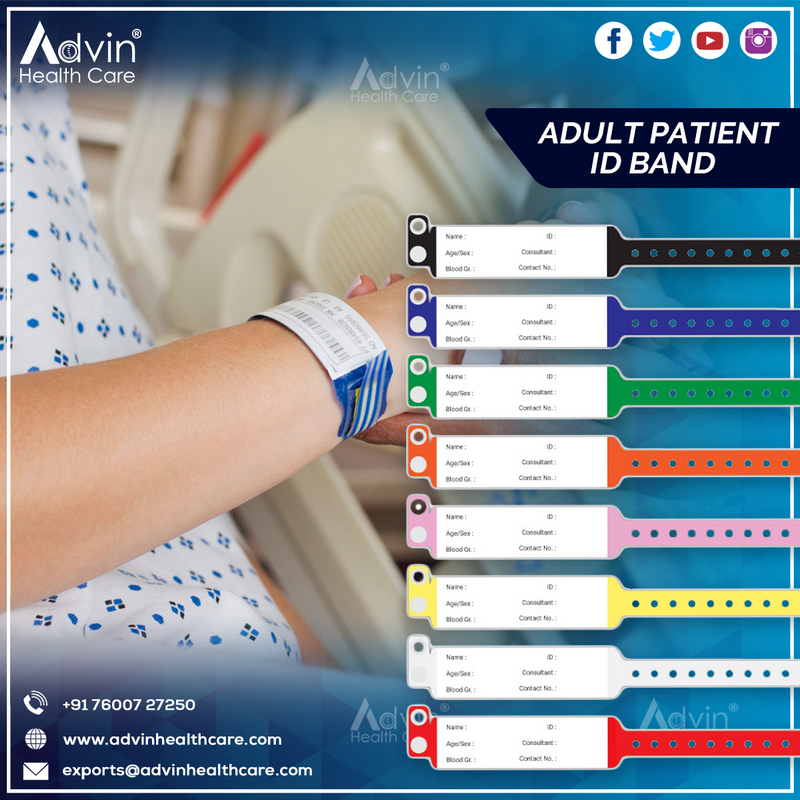Checking Out the Numerous Types of Patient Identification Band Used in Medical Facilities
In the complex globe of health care, the important duty of Patient Identification bands frequently goes undetected. These bands, differing from basic paper wristbands to advanced RFID bands, develop the foundation of Patient safety and security protocols, making sure precision in Patient Identification.
Understanding the Value of Patient Identification Bands
While they might appear like plain devices, Patient Identification bands play an essential duty in clinical facilities. These bands serve as a crucial tool for confirming Patient identification, protecting against clinical errors associated to misidentification. Patient Identification bands also help in simplifying management tasks, guaranteeing accurate record-keeping and payment.
Standard Paper Wristbands: Their Use and Limitations
Traditional paper wristbands have actually been a staple in Patient Identification throughout various clinical centers. While their usage prevails, they harbor certain restrictions that may impact their performance in Patient management. This area will concentrate on the scope of their application and the intrinsic disadvantages associated with their usage.
Paper Wristbands: Usage Scope
In the world of Patient Identification, paper wristbands have actually long held a crucial role. These bands are typically utilized in outpatient settings, where the Patient's remain is short-term. The wristbands have necessary information such as the Patient's name, date of birth, and an unique Identification number. This simple, yet reliable system, allows doctor to promptly and precisely recognize people, guaranteeing the correct therapy is carried out. Paper wristbands are likewise made use of in emergency circumstances, where rapid Identification is paramount. Their usage includes occasions like blood contribution drives and mass vaccination programs, additionally stressing their flexibility. Regardless of advancements in modern technology, the humble paper wristband stays a economical and reliable service for Patient Identification in various healthcare situations.
Limitations of Paper Wristbands
Despite their widespread usage, paper wristbands are not without their drawbacks. Their physical resilience is among the considerable constraints. Direct exposure to water, sweat, or misuse can provide them unreadable and even create them to degenerate. In enhancement, paper wristbands commonly do not have the technical capacities of even more modern choices, such as barcoding or RFID chips, restricting their capability to just showing written details. The failure to update or change the data on the wristband is an additional shortcoming. Additionally, if the info is handwritten, legibility can be jeopardized, leading to potential misidentification. Finally, paper wristbands can cause pain or skin irritability to some patients, particularly when put on for extended durations.
Barcoded Wristbands: Advancements in Patient Identification
While Patient Identification has actually long been a crucial facet of healthcare, the introduction of barcoded wristbands symbolizes a substantial jump onward. These bands utilize the simpleness of barcoding modern technology, permitting for Patient information to be quickly scanned and accessed. They my link boost the rate and precision of Patient Identification, decreasing the risk of medical mistakes connected to misidentification.
Radio Regularity Identification (RFID) Bands: a Step In The Direction Of Futuristic Medical Care
The advancement of Patient Identification bands has produced the introduction of Superhigh frequency Identification (RFID) Bands (patient identification band). These ingenious gadgets present key advantages for medical care centers, using a more reliable and technically advanced means of Patient Identification. The application of RFID in health care is a significant action towards a more futuristic find more information method to Patient monitoring and security
Understanding RFID Bands

RFID Bands: Trick Benefits
Mostly, these bands boost Patient safety by supplying exact, instant Identification, therefore decreasing clinical mistakes. RFID bands can save a vast amount of Patient information, consisting of clinical history and allergies, allowing individualized treatment. In general, RFID bands represent a considerable innovation in Patient Identification technology, benefiting both individuals and medical important link care service providers.
Executing RFID in Health Care
These bands supply a seamless means to track and determine patients, guaranteeing their safety and boosting efficiency in treatment procedures. RFID bands reduce clinical errors by offering exact Patient Identification, which is essential in protecting against misdiagnosis or wrong medicine administration. Thus, the implementation of RFID bands is a considerable action towards boosting Patient security and healthcare shipment.

Color-Coded Wristbands: Assisting in Quick and Accurate Medical Diagnosis
In the busy atmosphere of a medical facility, color-coded wristbands have arised as important devices for swift and exact Identification of a client's medical problem. These wristbands, put on by clients, lug particular shades that correspond to various clinical problems or statuses. This system is made to use instant aesthetic signs to health care suppliers, boosting Patient security and care quality.
Strategies for Efficient Application and Administration of Patient ID Bands
Attaining ideal use of Patient Identification bands demands a well-structured method for their application and management. Patient education is additionally vital; clients must recognize the function of the bands and the need for their continuous wear. It's important to have a back-up plan in area, such as barcode scanning or biometrics, to guarantee that Patient Identification is never ever compromised.
Verdict
Patient Identification bands are crucial in clinical facilities to make sure safety and precision. Traditional paper, barcoded, RFID, and color-coded wristbands each hold special advantages, ranging from cost-effectiveness to innovative data storage space and instantaneous medical signals. Effective execution and administration of these bands can significantly decrease clinical errors, increase performance, and improve general Patient care. Therefore, understanding and making use of these Identification devices is critical for preserving high criteria in healthcare.
These bands, varying from straightforward paper wristbands to sophisticated RFID bands, create the foundation of Patient safety methods, guaranteeing precision in Patient Identification.The development of Patient Identification bands has brought regarding the introduction of Radio Frequency Identification (RFID) Bands. Generally, RFID bands represent a considerable improvement in Patient Identification technology, profiting both people and health care suppliers.
RFID bands lower medical mistakes by giving precise Patient Identification, which is critical in protecting against misdiagnosis or incorrect medicine administration. Patient education and learning is likewise essential; people have to recognize the purpose of the bands and the requirement for their consistent wear.